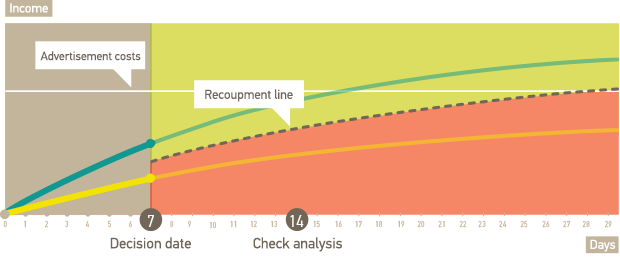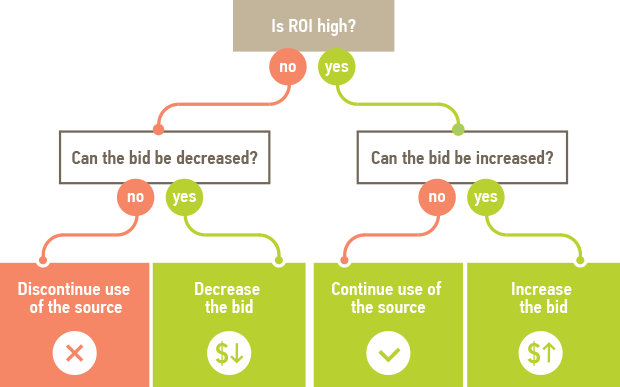Promotion Effectiveness Assessment Using ROI
Igor Klyukin, COO Pixonic
What should one do with a worthy project? The answer is fairly simple – fill it with traffic and collect income. I’d like to share certain principles implemented by Pixonic for project promotion. Getting ahead of myself, I can tell you right away that the main flow of our ad users comes from the direct purchase of installs — CPI (Cost Per Install), which may not be the best option for all projects.
The first principle: assessing effectiveness
We use the ROI (Return On Investment) parameter to assess effectiveness of our advertising campaigns. Within a single campaign we consider it equal to the relation of income from users to the cost of their attraction (ROI = Income / Cost × 100%). We collect data using a home-made analytical tool, keeping track of the income from users by cohorts on the 7th – 14th – 30th day after install. Preliminary decision on a campaign is available in about 7 days after its completion. If required, we repeat data collection in 14 or 30 days. Naturally, the users will hardly show any ROI in a week or two, however the information then available will be sufficient to forecast income and make a decision whether to continue or discontinue the advertising campaign. It is also useful to verify retention and players’ activity throughout a campaign to turn it off on time if the user activity resembles bots and the game is not actually played.
The figure below shows how the graphs of income accrual from two sources of traffic enable quick decision making regarding their recoupment.

The second principle: selecting and adjusting the sources
To attract a considerable amount of users, no one single advertisement partner will do, therefore we run through dozens of sources, constantly evaluating, adjusting and discontinuing the use of inefficient ones. The important thing to consider is that analytics provides us with the capacity to evaluate each campaign individually, regardless of the about of sources launched simultaneously. The adjustment options include changes in the advertisement types within the same source, cost per install, country targeting.
Here is a simplified process scheme of source ROI evaluation and of the corresponding bid adjustment.

And the third principle: country targeting
It is important to find out as early as possible what countries will your app suit best, so that you may select sources with the right target already set. First time around we simply bought worldwide traffic, after which I performed a simple assessment by calculating the summary income by country and dividing it by the amount of installs in the said countries (a calculation of ROI by country is better, if possible). I carried out that assessment a few weeks after purchasing the installs.
It is worth mentioning that countries with small amounts of installs may show an incorrect result, which is why I rechecked the results to monitor any considerable changes in the assessment results. This option can be optimized by calculation of preliminary forecasts based on the general market statistics. At that, one should give preference to consideration of the data associated with apps similar to one’s own. For instance, the top three places of the top-10 country rating by income of a popular football manager are held by Turkey, Indonesia and Thailand, whereas of the three market leading countries – USA, Japan and Great Britain – only Great Britain is at all present, and holding a tenth place at that. This is precisely why it is so important to consider both the general market situation and parameters of a specific app type.

I have described our experience of “smart” promotion. In the next articles read about our “launching” an app to the top and what results did it beget. As a conclusion, I’d like to tell you that following these principles does not guarantee success – there is always a place for situational decision-making, which means one must keep close track of things, evaluate a multitude of different parameters and follow market trends.